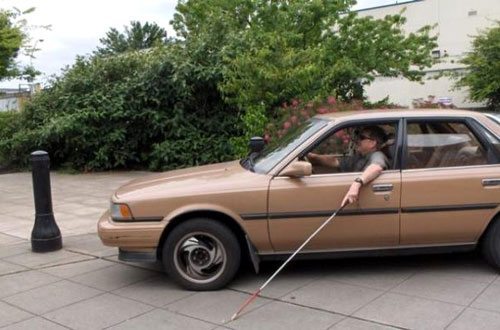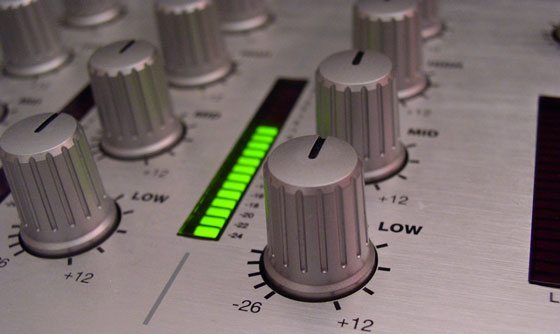Whether you’re just learning how to DJ or you’ve been DJing for years, this is a timeless article that will teach the importance of trusting the mixer levels. Along with a stellar response to the article, we got one email from a sound technician protesting: “Hey, you left us out! Why cant DJs keep levels out of the red!?” Ironically, our article reflects the common feeling about techs and sound levels: we usually forget about them in the face of the clubs more distracting clientele. But wait a sec, we are playing music in a heavily amplified environment – sound quality is important and distortion sounds bad, so why don’t DJs keep levels out of the red? The problem may be more complicated than you suspect.
DJ’s DRIVING BLIND

The club owner has, in his inebriated state, agreed to put YOU at the helm of a very large amplified party bus called his club. The Dj is in charge of driving music decisions and keeping the music levels at an even level throughout the evening. In the first hour everything is going smoothly and the levels stay nice and steady but it’s after the 2nd hour that the weirdest thing starts to happen. Even though the levels are the same, the music just does not seem as loud, so most folks do the natural thing: turn it up! In the 4th hour- the mixer is clearly broken because all the gain knobs are cranked, the master is at 11 and the EQ’s are at twelve but it is STILL NOT LOUD ENOUGH! Congratulations, everyone – including yourself – is now deaf, because you were driving the club blind.
GUESS WHAT? YOU’RE DEAF!
Immediately after noise exposure, people experience what is called a “temporary threshold shift” in which their perception of what is really loud becomes significantly lowered. This usually goes away after a few hours of silence but for some unfortunate people it can become a permanent reality. The trouble is that with continuous exposure to noise over long periods, a temporary noise shift can easily start to kick in mid-set. This means that if you are relying on tired ears to gauge where to put levels, then chances are you are making all the wrong decisions. The only solution is to accept that the captain is flying blind and trust the level meters that will provide an accurate picture of the situation. Here is a study that examined 30 DJs in Brazil and demonstrated that they all suffered from significant “temporary threshold shift” after their sets. Another study demonstrated that alcohol could make things worse – great!
TRUST THE MIXER

So if we all agree that our hearing can’t help us keep levels even throughout the night, then it is safe to say you need to trust the meters on the mixer. This part is easy; keep them even through the night and, if at all possible, stay out of the red! When the meters on a mixer or software start hitting red, this is called “clipping” and distortion begins to occur. Some mixers, like Rane, are designed with a soft clip feature so that the distortion does not sound terrible, but even this is going to drive the sound techs crazy.
DJ SOUND CHECK ETIQUETTE

Here is what Mike Miribal (the sound tech mentioned at the top of the post) has to say about sending him clipped out levels.
In an ideal situation, you should never be above the 0 gain level on the mixer. If you send a signal that is clipping, there is no way we can clean up the signal going into the amps or speakers. Sure, we can compress it, but if someone is sending me a signal that is clipping out highs and sub bass, it’s gone for good. If you’re spinning at a venue you haven’t been to, talk to the house audio guy, find out where they want it to be. If you send us low volume levels, we can always pick it up at the mixer and boost the signal from there. If going directly into self powered speakers, send yourself a signal of no more than +2dB out of the mixer (usually 1 or 2 red/yellow, depending on the mixer) and check the back of the speaker where the amp panel is. If you see the clip light on, you can either back down the speakers so that the clip indicator doesn’t come on (or only slightly comes on during the kicks if the system is really soft). That is where you want to be for the night. Its better to have the amps lower just in case whoever is DJing accidentally pops in a track that’s too hard. One more thing, keep the bass gains at 0. A good audio engineer will boost your bass from the mixer if its not punching hard enough. I saw some DJ this weekend run both bass gains at +2.5, but his kicks were phasing each other out… it sounded absolutely horrible. It’s almost always your bass that’s going to clip out first, and well, EDM without bass is like a car without an engine – its not going anywhere without it. That’s why staying out of the red (or at least not clipping out) is so important.
Ean Golden

Geen opmerkingen:
Een reactie posten